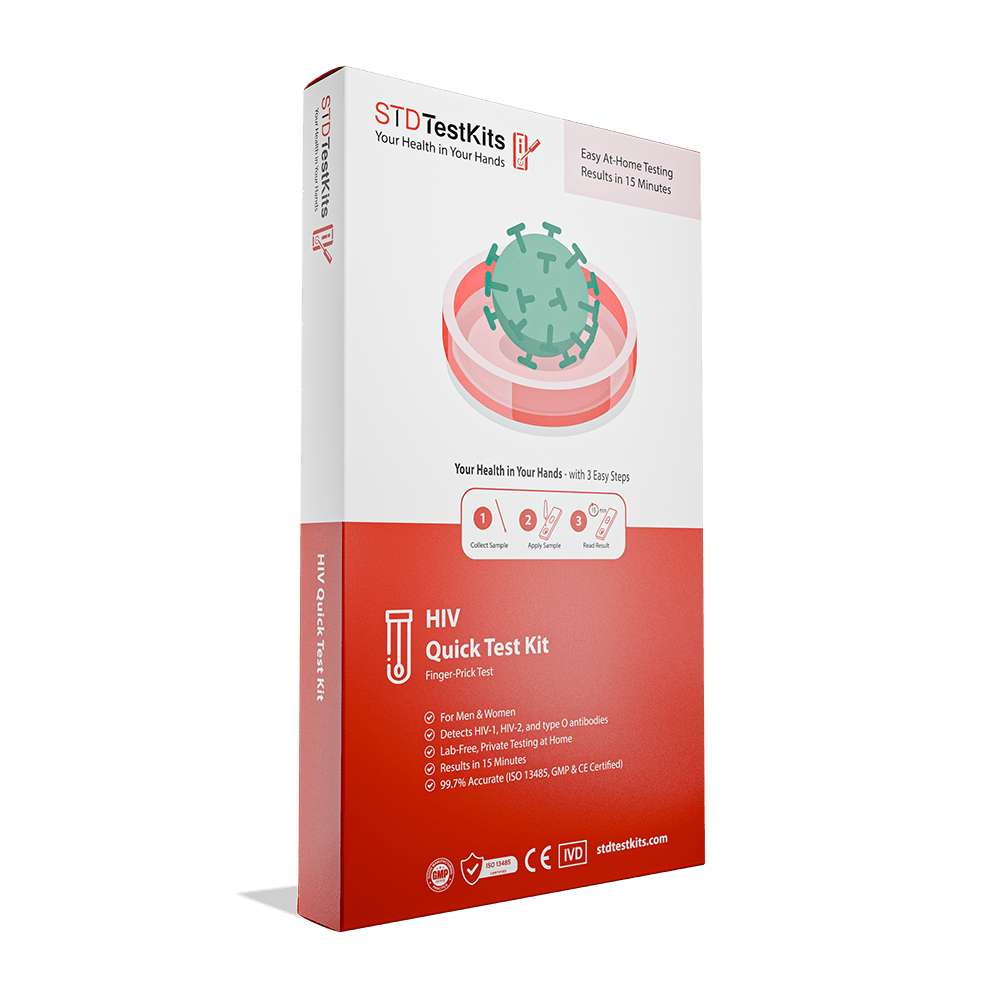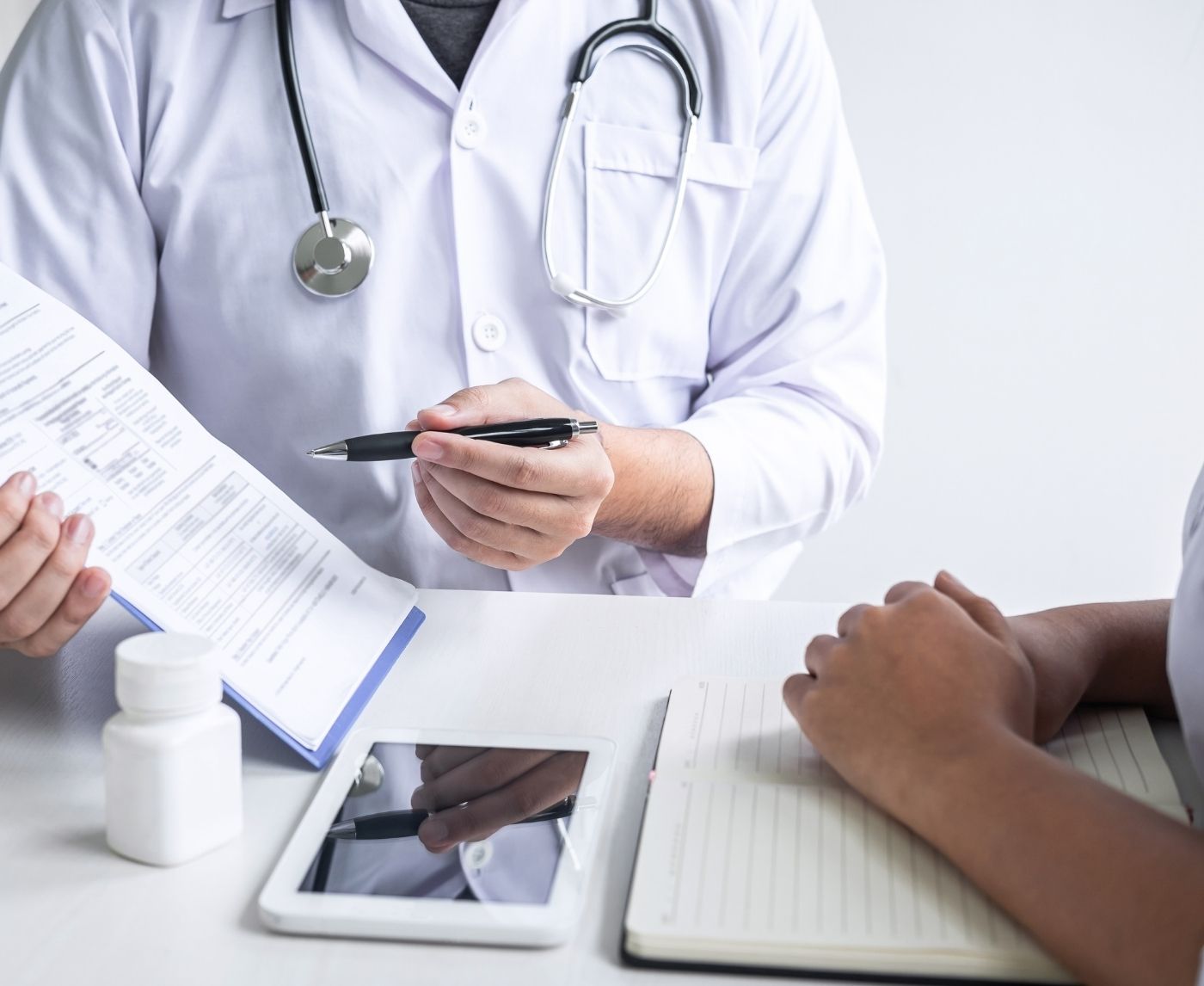We Are Getting Closer to Finding a Real Cure for HIV. What That Means for At-Home Testing
Quick Answer: PEP, Post-Exposure Prophylaxis, can reduce your risk of contracting HIV if started within 72 hours of potential exposure. The sooner you begin, the more effective it is.
What Is PEP, Really?
Post-Exposure Prophylaxis, or PEP, is an emergency course of HIV medication that you take for 28 days after a possible exposure to the virus. It doesn’t cure HIV. It doesn’t work like a vaccine. It’s more like a fire extinguisher, meant to knock down the flames before they catch. According to the CDC, when taken correctly, PEP can reduce the risk of HIV infection by over 70%, and in some studies, up to 90% depending on timing and consistency.
But timing is everything. PEP isn’t something you can grab days later at your convenience. You need to act within that critical 72-hour window, and ideally within the first 24. It’s not always easy, especially if you're scared, unsure what to say at a clinic, or worried you’ll be judged. That’s where knowing your options, fast, can change everything.
The 72-Hour Window: Why Time Matters More Than Anything
Let’s say it’s 1PM on a Saturday. You had sex with someone new Friday night, and now you’re panicking. If you start PEP within the next few hours, you’re in the best possible timeframe. The further you get from the moment of exposure, the harder it becomes for the medication to stop the virus from establishing itself in your body.
Think of it like this: HIV doesn’t infect the body instantly. It takes time, roughly 24 to 72 hours, for the virus to reach your lymph nodes and begin replicating in a way that becomes harder to stop. PEP uses a combination of antiretroviral medications that work to block HIV from taking hold during this brief window.
Here’s how that window breaks down in practical terms:
Table 1: PEP effectiveness by time since exposure. Numbers reflect estimates from clinical guidelines and observational data.

People are also reading: Can You Get HIV from Oral Sex? What the Science Really Says
Who Actually Needs PEP?
You might think PEP is only for people with very specific, high-risk lifestyles or for survivors of sexual assault. But that’s a harmful myth. The truth is, PEP is for anyone, anyone, who believes they may have been exposed to HIV. That includes accidental condom breakage, sharing needles, unexpected bleeding during sex, or finding out a partner is HIV positive after the fact.
Consider a story like Micah’s, 22, who had just moved to a new city and was still figuring himself out. After a night out, he hooked up with a guy he barely knew. The next morning, the guy admitted he was living with HIV but "undetectable." Micah panicked. He wasn’t sure what undetectable even meant. He didn’t know if he was safe, or if that meant he had 72 hours to change his future.
“I felt like I’d messed up my whole life in one night,” he said. “But then I found out about PEP online and went to a walk-in clinic. They didn’t judge. They just got me started.”
Micah’s story isn’t rare. What makes the difference is awareness and speed. If you’ve had a potential HIV exposure and are unsure, it’s almost always better to ask about PEP than to wonder and wait.
Where to Get It, and What Happens When You Ask
One of the biggest hurdles to PEP isn’t the science. It’s the system. People are often afraid they’ll be turned away, blamed, or made to feel dirty. But the truth is, most emergency rooms, urgent care centers, and sexual health clinics are trained to provide PEP without judgment.
Here’s what typically happens when you walk in:
You’ll be asked when the exposure happened, how it occurred (sex, needle, etc.), and if you know anything about the other person’s HIV status. You may get a rapid HIV test to make sure you’re not already positive (PEP is not for people who already have HIV). If you qualify, they’ll give you a starter pack, usually a 3–5 day supply, and a prescription for the rest of the 28-day course. In some areas, you can also access PEP through telehealth or online services, which may deliver the meds to your door.
Without insurance, the out-of-pocket cost can be high, over $1,000, but many public programs and insurance companies pay for PEP in full. If money is tight, programs like NeedyMeds or LGBTQ+ centers in your area can often help or give you vouchers.
What’s in the Pills, And What They Do to Your Body
PEP usually involves a combination of two to three antiretroviral medications. The most common regimen is a single daily pill that includes tenofovir disoproxil fumarate and emtricitabine (marketed together as Truvada), paired with a second pill like raltegravir or dolutegravir. These drugs stop HIV from making copies of itself in your cells, which is like shutting the door before the virus can get in.
Most people can handle PEP, but the side effects can be very bad, especially if you're already anxious. Some people say they feel sick, tired, have vivid dreams, or have stomach pain in the first week. Others feel completely normal. These side effects are usually temporary and fade after your body adjusts. What matters is sticking to the full 28-day course, even if you feel fine or think you were never really at risk. Cutting it short makes it less effective.
Here’s how a typical PEP regimen compares across a few scenarios:
Table 2: Common PEP medication combinations and their practical differences.
The Emotional Fallout No One Talks About
It’s not just the pills. It’s the shame spiral. The panic. The inner voice whispering that you should have known better. That you deserve what might be coming. That you don’t get to feel safe anymore.
This emotional weight is especially heavy for people who’ve internalized stigma, queer men, sex workers, survivors, and anyone raised in a household where sex was taboo. Even the act of asking for PEP can feel like confessing something dirty.
But here’s the truth: choosing to get PEP is not an admission of failure. It’s an act of power. It’s saying, “I care enough about myself and my partners to take control.” You are not reckless for wanting to protect your health. You are responsible. You are worthy of care.
Isaiah, a 36-year-old nurse, once hesitated to seek PEP after an accidental needlestick at work. “I knew I should have reported it,” he admitted, “but I felt embarrassed. Like I’d messed up. But when I finally spoke to my supervisor, they didn’t shame me, they helped me get meds that same day.”
Stigma delays action. Delays create risk. And risk, when it could’ve been prevented, leads to lasting regret. If you’re here, reading this, you’re already ahead of the curve. The only thing left is to act.
What PEP Doesn’t Do (And Why That Still Matters)
Let’s clear up a common misconception: PEP protects against HIV, not other STDs. If you had unprotected sex or shared needles, you may still be at risk for chlamydia, gonorrhea, syphilis, herpes, or hepatitis B and C. Some providers will recommend additional STD testing at the time of your PEP prescription and again after the window period for each infection.
Also, PEP isn’t magic. It doesn’t work if you don’t take it exactly as prescribed. It doesn’t protect you from future exposures. And it’s not meant to be a regular prevention method. That’s where PrEP, pre-exposure prophylaxis, comes in. If you find yourself needing PEP more than once, or if your lifestyle puts you at recurring risk, talk to your provider about switching to PrEP after your PEP course ends.
The good news? HIV prevention today is light-years ahead of where it was a generation ago. You don’t have to wait for symptoms. You don’t have to wonder for weeks. And you don’t have to fear a death sentence, because treatment and prevention have changed everything.

People are also reading: First Time Getting an STD Test? Here’s Exactly What to Expect
Real Talk: What Happens After You Finish PEP?
The 28 days are over. You swallowed every pill, despite the nausea, the mental spiral, the calendar reminders that made your chest tighten. Now what?
At the end of your PEP regimen, your provider will likely schedule a follow-up HIV test, usually around 4 to 6 weeks after completing the medication. This isn’t because they think it failed, it’s because even the best treatments can’t promise 100%. It’s also your moment of clarity. Closure. Relief. And if it turns out positive, which is rare if you took PEP correctly, you’re still not alone. HIV today is manageable with one pill a day and a normal lifespan.
If that test comes back negative and you’re still sexually active with new or multiple partners, this is the time to think about next steps. Consider whether PrEP makes sense for you. Consider getting tested for other STDs if you haven’t already. And above all, consider how you want to feel the next time something unexpected happens. Because prevention isn’t about paranoia. It’s about peace of mind.
And peace of mind is just a few clicks away. If you're waiting for results, or if you're unsure about other STDs that PEP doesn’t cover, this combo STD home test kit checks for the most common infections quickly and discreetly.
How PEP Compares to Other Prevention Tools
Still trying to figure out where PEP fits in your overall plan? Here’s a human-first comparison to help it make sense.
Table 3: Comparing HIV and STD prevention tools across use, protection, and access.
The Bottom Line: You’re Not Broken, You’re Brave
Whether you’re reading this because of a scare last night or you’re deep in the middle of a what-if spiral, know this: you’re not alone. The path to HIV prevention doesn’t start with perfection. It starts with information, action, and the belief that your health is worth protecting.
PEP isn’t a secret club. It’s not a punishment. It’s not something to be ashamed of. It’s a tool. One of many. And if you ever find yourself staring at the ceiling, full of regret and fear after a moment that felt good, or confusing, or just real, remember that one decision can make all the difference.
So take the test. Ask the doctor. Fill the prescription. Because you are not the worst thing you’ve done. You are the next choice you make.
And if that choice is clarity, you can start here: Order a discreet combo STD test kit and know for sure.
When Shame Delays Action (And How to Beat It)
For a lot of people, the biggest barrier to getting PEP isn’t access—it’s shame. The kind that whispers, “You should’ve known better,” or, “You’re going to be judged.” It shows up in the silence between Googling symptoms and actually making the call. It sounds like a dozen tiny lies convincing you to wait one more hour. Then another. Then it’s too late.
Rina, 27, told herself for two days that her exposure “wasn’t a big deal.” She kept checking the clock, watching the hours tick past, wondering if she was overreacting. “By the time I finally called a clinic, it had been 74 hours,” she said. “And they said I was just barely outside the window.”
This kind of delay is painfully common. So here’s the truth, from someone who’s seen hundreds of these timelines: you are never wrong to ask for help. You’re not weak for wanting peace of mind. You don’t need permission to protect yourself. If you think you might need PEP—even if you’re not sure—just ask. You won’t regret moving fast. But you might regret waiting.
FAQs
1. Can I get PEP without going to the ER?
Yes, and honestly, unless you’re dealing with a major injury or it’s the middle of the night, you might not even need to step foot in a hospital. Many urgent care clinics, walk-in sexual health centers, and even telehealth platforms can get you a PEP prescription fast. Some cities even offer delivery if you qualify through online services. The key is acting quickly, don’t let logistics stall you.
2. How late is too late for PEP?
Once 72 hours have passed since the exposure, PEP is no longer considered effective. That’s about three full days, so if the clock’s ticking, don't wait. Every hour counts. If you’re within that window, go. Run. Call. Message. If you’re past it, talk to a provider anyway, there might still be next steps to take, including STD testing or starting PrEP.
3. Is it true you have to take the pills for 28 days?
Yep, the full four-week course is non-negotiable. PEP only works if you take it every day without missing doses. It’s kind of like antibiotics, stop too early, and it might not finish the job. Even if you feel fine, even if you’re tired of the routine, keep going. You’ll thank yourself later.
4. Will people know I’m on PEP?
Only if you tell them. Your medical info is private. If you're on a family insurance plan and worried about someone seeing the paperwork, ask the clinic or pharmacy about keeping things confidential. There are ways. You deserve care without fear of exposure, pun intended.
5. What does PEP feel like?
Most people are fine. Some feel a little off. Maybe queasy, maybe tired. A few get headaches or weird dreams. But most side effects ease up after the first few days. It’s not fun, but neither is living with anxiety about HIV. One 28-day sprint for long-term peace of mind? Worth it.
6. I took PEP after a scare. Do I need to test again?
Yes. You’ll usually need a follow-up HIV test 4–6 weeks after you finish your pills. This confirms everything worked. It's routine. It doesn’t mean something went wrong, it’s just science doing its due diligence. Think of it as your final stamp of reassurance.
7. What if I need PEP more than once?
No shame here. Life happens. But if you're finding yourself in situations that lead to multiple rounds of PEP, it might be time to talk about PrEP, the once-a-day pill that prevents HIV before exposure. It's discreet, effective, and liberating for a lot of people who want to stay protected long-term.
8. Can teenagers get PEP?
Yes, and they should if they need to. Teenagers can get sexual health care without their parents' permission in a lot of places. If you're under 18 and scared to ask for help, know that the people who help you are trained to keep your information private and take you seriously. You are not too young to be safe.
9. Does PEP mess with other medications?
Sometimes, but not usually in dangerous ways. It’s important to tell the provider what you’re taking, whether it’s antidepressants, birth control, HRT, or anything else. They’ll check for interactions and adjust if needed. You don’t have to figure it out alone.
10. Is this all really necessary if the person said they were “undetectable”?
Great question. If someone is truly undetectable and on consistent treatment, they can’t pass on HIV. But here’s the catch: you don’t always know that for sure in the moment. If it’s someone you trust and know well, you may feel safe skipping PEP. But if there’s doubt, delay, or any red flags, go ahead and start. You can always stop if testing clears it up.
You Deserve Answers, Not Assumptions
PEP is more than just a medication, it’s a second chance. A reset button. A powerful act of care in a world that often punishes people for their curiosity, their joy, or their mistakes. Whether you’re reaching for it after a hookup, a needle prick, or a painful assault, what you’re really reaching for is control.
And that control? It’s yours. It starts with saying yes to testing. Yes to prevention. Yes to yourself. You don’t need to wait for someone else to tell you it’s worth it, you’re already here. You already know.
Don’t wait and wonder, get the clarity you deserve. This at-home combo test kit checks for the most common STDs discreetly and quickly.
How We Sourced This Article: We combined current guidance from leading medical organizations with peer-reviewed research and lived-experience reporting to make this guide practical, compassionate, and accurate.
Sources
3. Clinical Guidance for PEP | CDC
5. Post‑Exposure Prophylaxis (PEP) | NIH HIVinfo
6. PEP | HIV Prevention | Let’s Stop HIV Together (CDC)
7. PEP Guidelines | National Clinician Consultation Center (UCSF)
8. Post‑Exposure Prophylaxis | HIV.gov
9. A Global Review of National Guidelines for Post‑Exposure Prophylaxis | PubMed
10. CDC Updates Guidelines for Use of Nonoccupational PEP | AJMC
About the Author
Dr. F. David, MD is a board-certified infectious disease specialist focused on STI prevention, diagnosis, and treatment. He blends clinical precision with a no-nonsense, sex-positive approach and is committed to expanding access for readers in both urban and off-grid settings.
Reviewed by: J. Alvarez, NP | Last medically reviewed: November 2025
This article is for information only and should not be used as medical advice.







